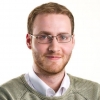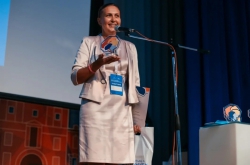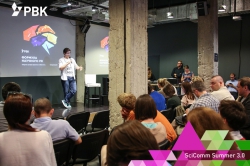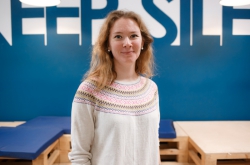There are several categories. “Experiment” is the first category which assesses popular scientific events that were organized by the university team or that the university or a research center took part in. “The Presence Effect” category evaluated the most successful projects that the teams of science communicators have implemented together with the media. Finally, the “Superfluidity” category required a description of successful projects from the universities’ websites. The Grand Prix is given to the team that comes first in all three categories.
This year the team of ITMO’s Strategic Communication Department won the Grand Prix. Over the past year, the team has managed to organize more than 70 events, launch a number of campaigns, increase the number of social networks followers by 25% and, most importantly, attract the applicants with an average USE (Unified State Examination) score of 90.3 (out of 100).

“The goal of communications departments is to constantly look for new formats, to surprise the audience and to present information from various angles. After all, our global goal is to find and attract like-minded people. The more such people we attract the stronger we become. We create an external image of ITMO University as a talent magnet, where everyone can fulfill their potential. As for our internal audience, we always emphasize that the university is working for its students”, noted Anna Veklich, head of the Strategic Communications Department of ITMO University in her speech at the “Communication Laboratory” forum.
The Russian Science Foundation has won in the “Eureka” category which is a small Grand Prix of the competition. The second place in this category was given to the Institute for Information Transmission Problems of the Russian Academy of Sciences (which also came second in the “Experiment” category), third place went to the Budker Institute of Nuclear Physics. The best in the “Superfluidity” category is the MISIS National University of Science and Technology. The Far Eastern Federal University and the North-Eastern Federal University followed it. The Krasnoyarsk Scientific Center and the Ural State University came second and third respectfully in the category “The Presence Effect”. Finally, the Skolkovo Institute of Science and Technology came third in the “Experiment” category.

“There are both old favourites and new faces among the winners. We already know about the high standards of ITMO and HSE since last year, but the Russian Scientific Foundation and the Russian Academy of Sciences are much stronger this year; they have grown over the past year and the jury noted this progress. I am glad to see so many regions among the winners: Vladivostok, Yakutsk, Krasnoyarsk, Yekaterinburg. The specialists know their cases, but it is very difficult for the regions to interact with the Moscow media and we hope that our award will help them in their daily work,” says the curator of the “Communication Laboratory” award, the newly elected president of AKSON, Alexandra Borisova.
The award ceremony took place as part of the II All-Russian Forum of Science Communicators. AKSON has organized the forum for the second year in a row. This year, the Moscow Institute of Physics and Technology, the 2017 Grand Prix winner, hosted the event. The forum offered a platform to discuss the challenges for science communication in Russia, the difficulties and methods of promoting science to the public, as well as involving scientists in more active communication with the public. The participants shared successful practices of implementing a communication project and touched upon the topic of professional ethics in the field of science communication.

“One of the most relevant topics discussed at the forum was the professional self-identification of specialists in science communication. The profession itself only appeared in Russia a few years ago and now the role of these specialists causes heated discussions. For example, to what extent should we defend the interests of our employers? After all, we are subject to both the corporate norms of organizations and the norms of the global scientific community. And they often contradict each other. Do we have any independence in this case, or do we perform a purely service function in a scientific organization? Our community has yet to answer these questions. Another eternal topic for discussion is the interaction of scientific journalists with communication specialists. Usually one can experience a whole palette of feeling, from love to hatred, during such discussions. We couldn’t avoid it this year as well”, concludes Dmitry Malkov, head of the Science Communication and Outreach Office at ITMO University.
Translated by Pavel Vorobyev






